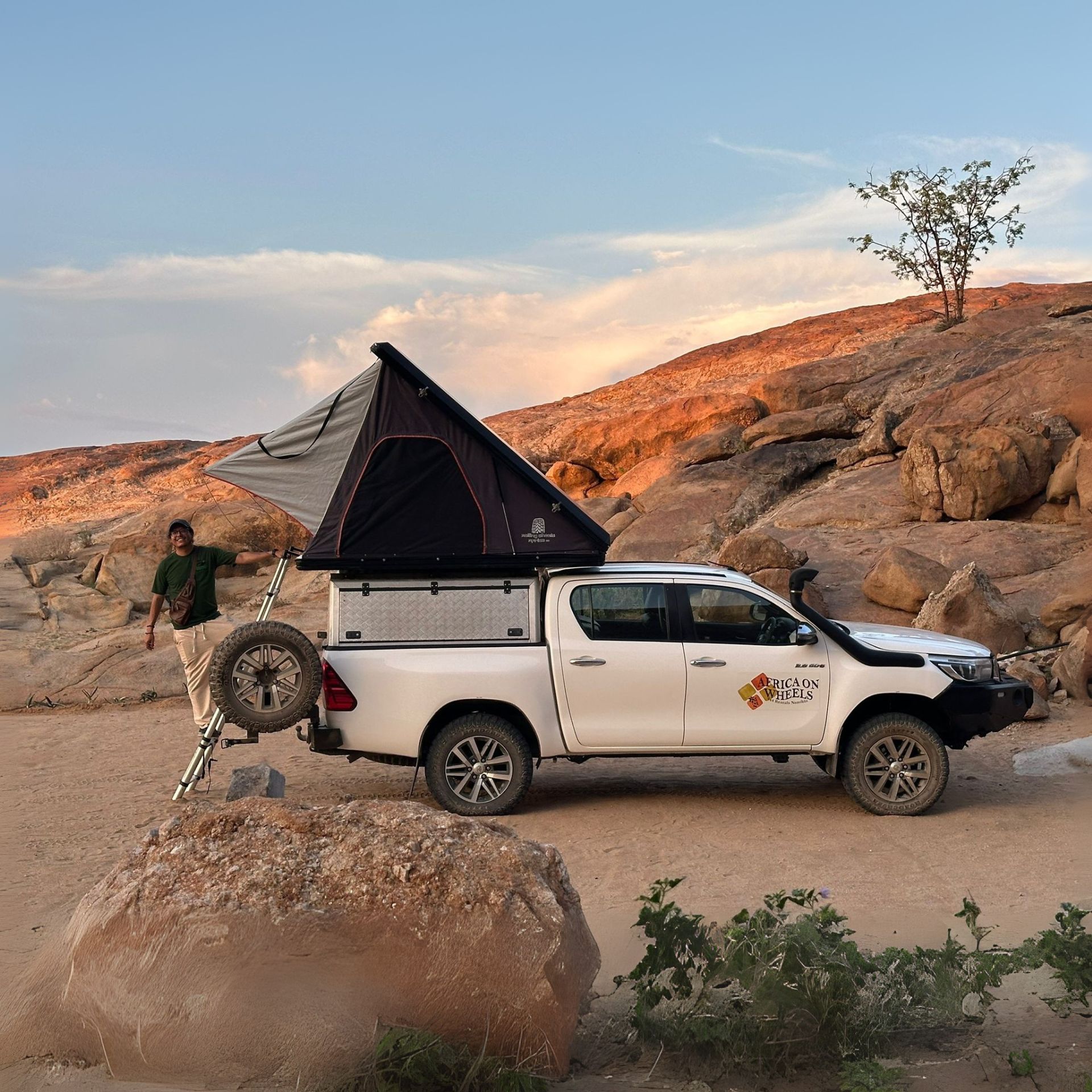From the distinctive Himba, to the Herero, and the San, these are some of the most interesting tribes you can visit and learn more about in Namibia.
With almost a dozen ethnic groups coexisting together, Namibia’s cultural heritage is vast and outstanding. Around half of Namibia’s population can be traced back to Ovambo and around 10 other ethnicities are proud of calling themselves Namibian. Here in Namibia, you can find Herero, Damara, Kavango, white European, Nama, Caprivian, San, Basrer, and Tswana living in different parts of the country. And while most of them have adopted a modern way of life and never wore traditional attire or celebrated ceremonies from hundreds of years ago, others are proud of these long traditions and don’t want them to change anytime soon.
It’s true. When visiting Namibia, is it difficult to distinguish between a Nama and a Herero, or an Ovambo and a Nama a first sight. However, for those interested in learning more about these disappearing cultures and traditions, Himba and San villages and the Herero districts in Windhoek are some places to go and see some of the most fascinating tribes in Namibia.
Which are the most traditional tribes you can visit in Namibia, and here is where to find them:

Herero – The most stylish Tribe in Namibia
With almost 90% of the Herero population residing in Namibia and known for their classic Victorian dresses from the 1800s, it is easy to identify a Herero while walking on the streets of Windhoek and driving through villages towns in Namibia. They are one of Namibia’s proudest tribes – if not the most – and they are happy to wear their traditional clothing. Furthermore, if you get the chance to meet a Herero, they are very open to talking to you about their heritage, traditions, and what they are doing to preserve it for future generations.
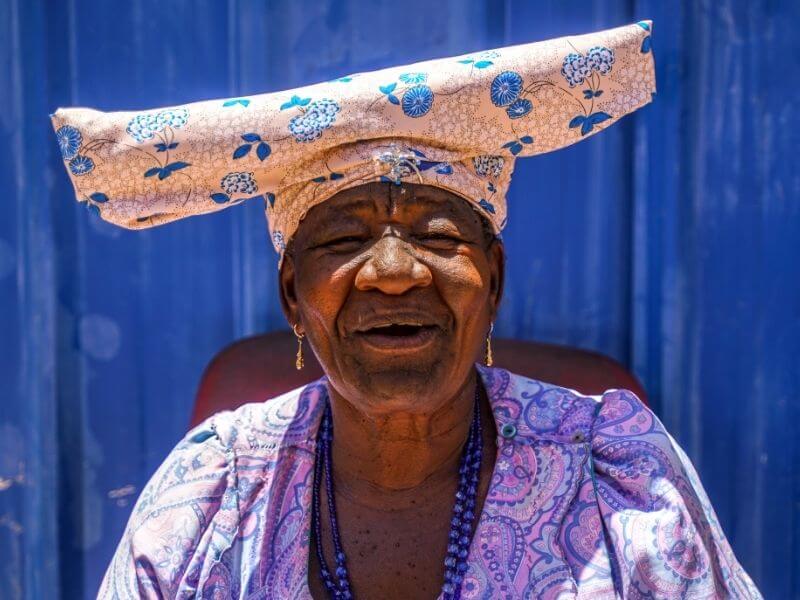
For sure, the Herero outfit is one of their most distinctive characteristics. This outfit was kept by the German colonialists after they left Namibia and the Herero started owning it. What some decades ago represented a symbol of oppression is today for a Herero a symbol to cherish culture and freedom. On the one hand, a woman’s outfit is a headscarf symbolizing a cow and her dress is an adaptation of the Victorian-styled dress of their former German settlers. On the other hand, men wear military-style suits adapted from the German soldiers at the beginning of the 20th century. Its crucial difference, the badges on the side and front of the jacket represent which sub-tribe they belong to.
The best way to interact with a Herero family is by stopping by at one of their many 4-5 hut villages located along the highways in central Namibia. You can find several Herero villages on the road between Twyfelfontein and Windhoek. Here, you can buy crafts, learn about their outfit and have a small interaction with them. Another option would be at markets and Himba villages, where some Herero join sell their crafts – however, some consider this experience not as authentic and more a tourist attraction.
If you are brave enough, though. You can get in contact with Herero around the streets of Katatura. Here you can see the Herero in their traditional outfit drinking beer at the bars, selling fruits at the central market, or simply walking from after a long day of work. If you interact with them in these situations, this would probably be the most genuine connection you will find with them.
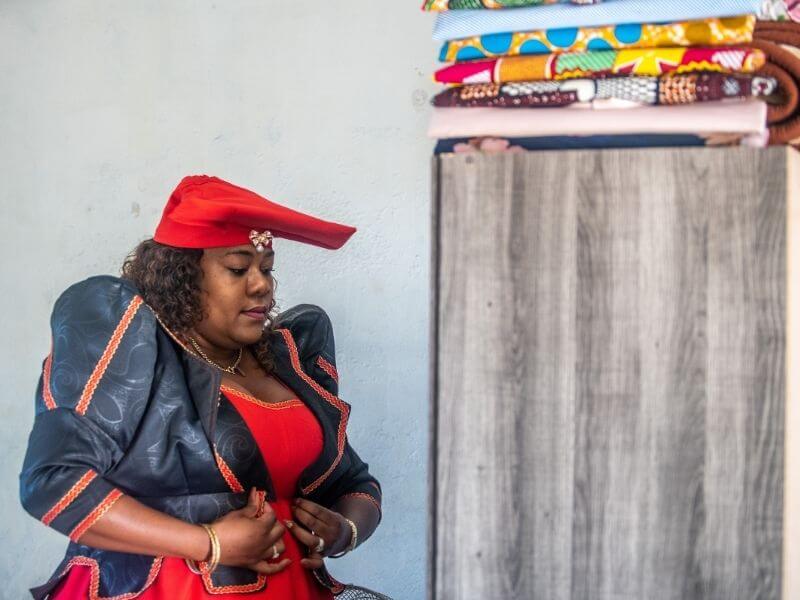
Himba tribe – The most unique tribe in Namibia
An almost naked body, matted red braids, and dozens of accessories with a unique meaning. The first time seeing a Himba living traditionally is a moment nobody forgets, and you are simply speechless and astonished by the experience. For anyone concerned about cultural preservation, curiosity arises, and you simply don’t know how to start interacting and make the experience as genuine as possible.
Read more: Meeting The Pygmies – Africa’s Forgotten Tribe
Read more: Packing list for a camping trip to Namibia
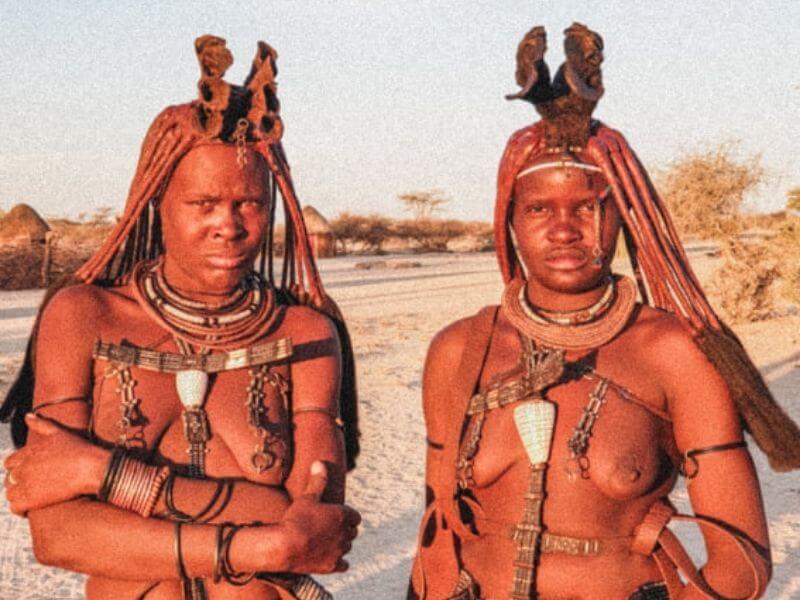
Unfortunately, the more you get to know the Himba, the more you understand how struggling preserving traditions is. Most of the Himba following their practices (around 50.000 worldwide) live in almost complete isolation in Northern Namibia’s Kunene region and the border with Angola. They don’t want their lives to get disturbed, and many of them hate the idea of foreign visitors disrupting their day to take photos and look at them oddly.
Once outside their traditional villages, the situation is even more uncomfortable, as the Himba in traditional clothing attracts so much unwarranted attention – by locals and foreigners. According to BBC News, many younger Himba feel ashamed of living in the past and would love to change their traditions for living accordingly to modern urban standards. “Some are worried this move will eventually spell the death of Himba culture”, states BBC in their article.
Fortunately, a good relationship with the tourism industry has been helping the Himba to show their culture to the outside world and make them feel proud of this heritage. Himba villages located all around the country are the best place to get a good glimpse of how the Himba live. Here, you can interact with some Himba who want to preserve their traditions while living in the modern world. You can learn about their daily life, clothing and hairstyle, practices, and social structure.
To visit a Himba village, the best way is to contact your lodge and ask where these villages are located. You don’t need an organized tour to do this. Simply drive to their villages, and they will be happy to welcome you and explain to you more about their culture. The Himba villages in Spitzkoppe and the one 30 minutes away from the Anderson Gate at Etosha National Park are some of the best places to visit and learn more about this disappearing culture.
Read more: Which are the best places to see in Namibia
Read more: Meeting the Chewa tribe in Malawi
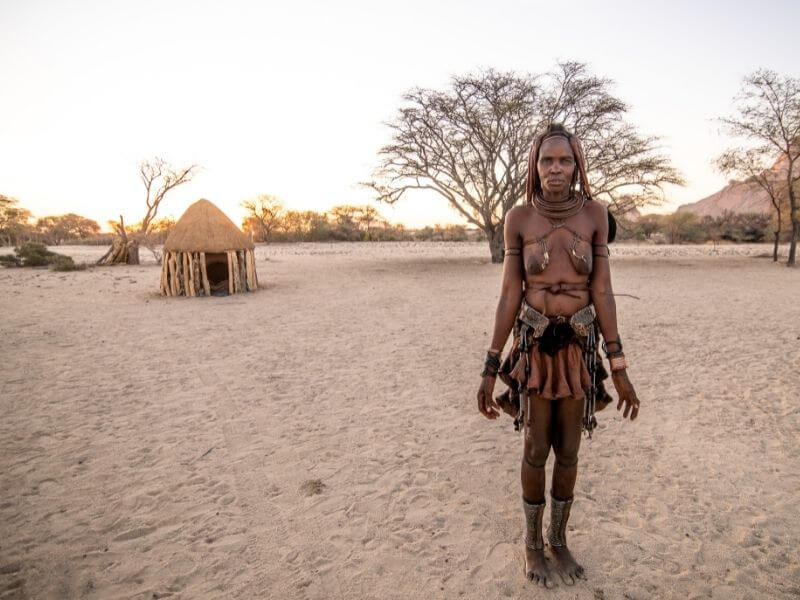
San or Bushmen – The fathers of humanity
Considered to be the first race on earth and possibly the “fathers of humanity”, around 100.000 San are still left, with the vast majority living all around southern Africa. From these 100.000 San, approximately 35,000 live in Namibia, forming six tribes, each with its own language and customs. From all the ethnic groups coexisting in Namibia, the San are the only tribe that, to an extent, still survives entirely on the natural resources they find.
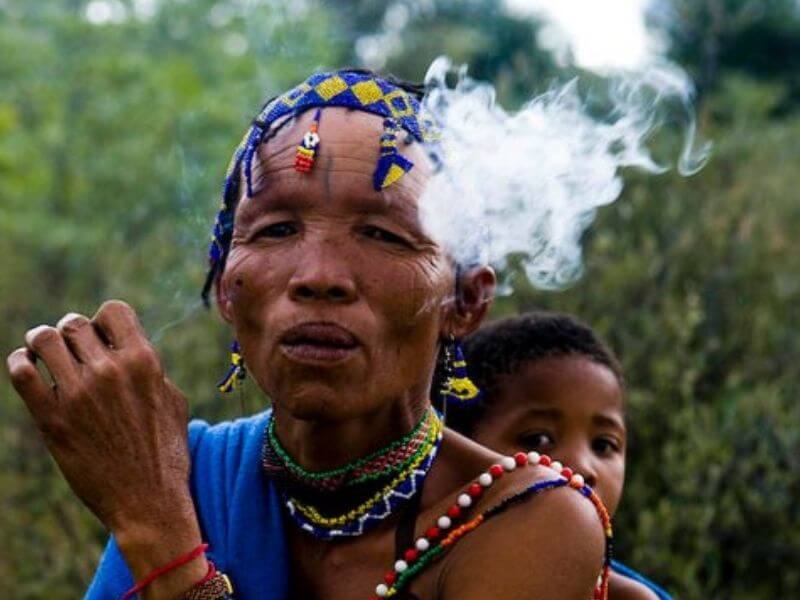
However, just like most ethnic groups living in the traditional ways, modern culture and politics significantly affect their way of life. Today, most San live in displacement. More than 100 years ago, they were expelled from the arable areas in southern Africa and sent to desertic regions such as the Kalahari Desert, Damaraland, and the Namib Desert.
The San were able to survive. However, most of their heritage and traditions disappeared, and we can even say that the San are on the edge of extinction.
Like the Himba population, a group of San, in collaboration with NGOs and the government, are trying to spread the word and keep their traditions alive while adapting in a different way to the modern world. San cultural centers are growing in parts of Namibia, Botswana, and South Africa. Here, visitors can learn how the San coexists sustainably with nature for centuries and experience firsthand how San could hunt in the savanna, start a fire out of broken branches, and survive in one of the most challenging environments on earth.
The Mbunza Living Museum at the border with Angola, as well the Living Museum of the Ju/’Hoansi-San in Grashoek, and the Living Hunter’s Museum of the Ju/’Hoansi-San, near Tsumkwe are some of the best places in the country to observe and learn more about the San.
Read more: Spending a night with the San in Botswana
Read more: Meeting the Mundari tribe in South Sudan
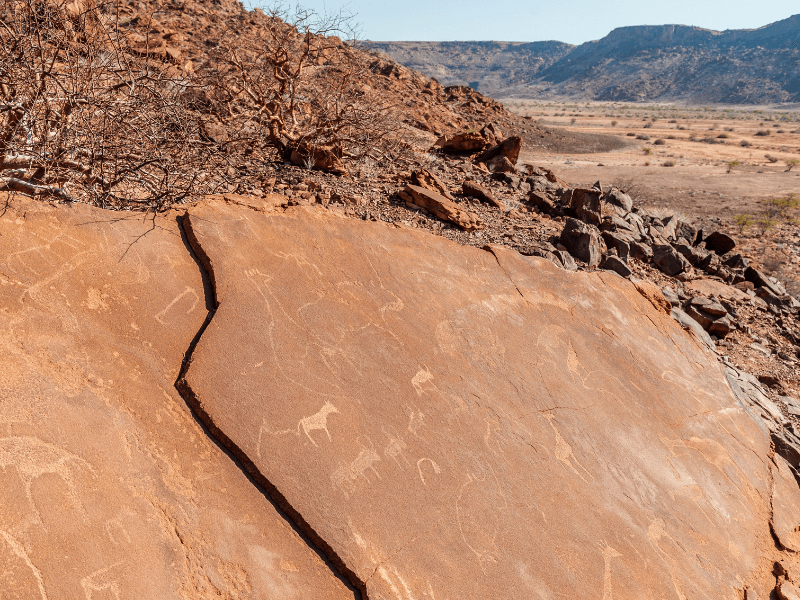
Damara tribe – The hunters in one of the most desertic parts of the world
Mainly consisting of ancient hunter-gatherers and animal farmers displaced during the South African expansion in the 1960s, the Damara are known for being exiled in the vast but primarily inhospitable Damaraland in central Namibia. Additionally, they are one the largest ethnic groups in Namibia – they make up around 9% of the population.
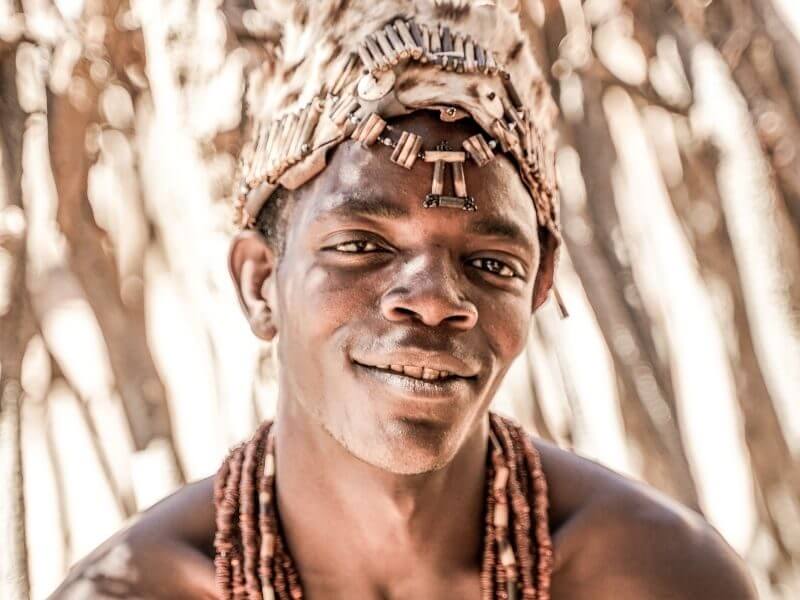
Unfortunately, just like most tribes in Namibia, the Damaran have adapted to modern society, and most of them left their traditions behind.
It is tough to recognize a Damaran without their traditional attires, and most Damaran you would meet at a bar or an event won’t tell you about their heritage. They consider themselves Namibian, and the word “Damaran” is something more from the past.
However, for travelers curious to still learn about their lost cultures and traditions, the Damara Living Museum in Twyfelfontein is the right place for that. Here, Damaran, still living in this region, will show you how their cultural ceremonies were performed and how they could live in Damaraland.
However, this is mostly a show, as no Damaran still lives in this way, and the traditions of hunting and living in nature are gone long ago.
Visiting the Damara Living Museum shows you a glimpse of how ethnic traditions are slowly disappearing. Today, Damara’s cultural way of life can only be experienced in a living museum. Tomorrow, the Himba’s, San’s, and Herero could be like that.
Read more: How to plan a road trip in Namibia
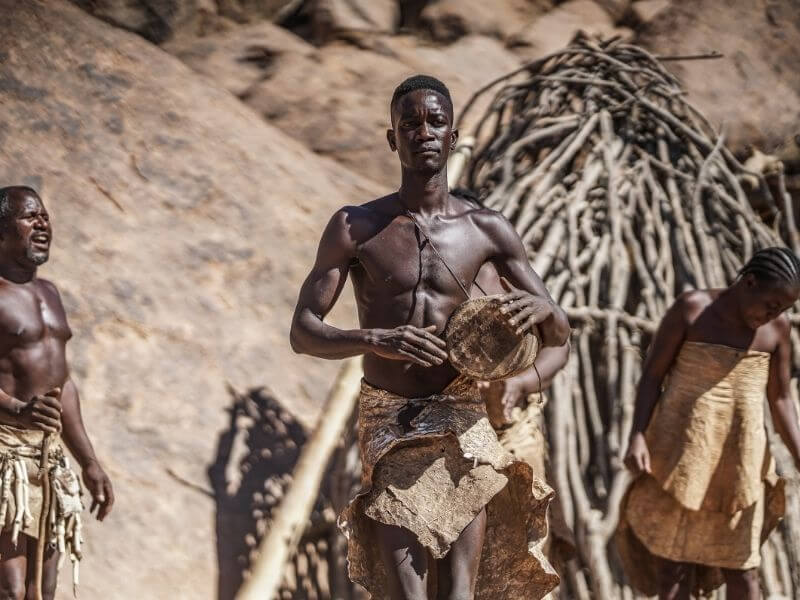
Read more: What are the best things to do in Windhoek
Read more: The Batwa People Of Uganda – A Tribe On The Edge Of Disappearing


